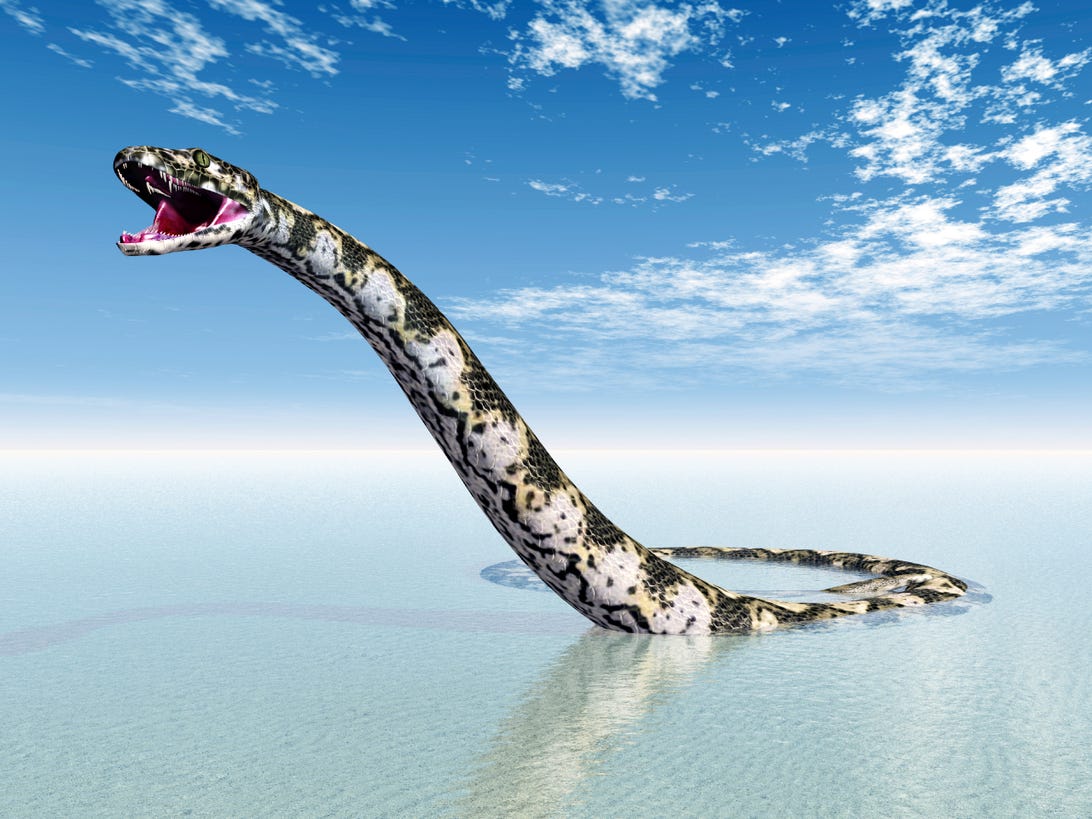Scientists estimated over 500 million species to have died out throughout evolution, accounting for 99.9% of all species ever produced. This list does not include prehistoric animals (dinosaurs, mammoths, and the like), but only those that have died out recently and are relatively well-known. Humans wiped out the majority of them, either directly (hunting) or indirectly (habitat destruction, import or introduction of alien species).

Natural occurrences such as climatic warming or cooling or changes in sea levels can cause animal extinction. In more recent times, however, we have blamed human activity himmensely. The main cause of modern extinctions, along with pollution, the introduction of alien species, and overfishing or hunting, is habitat destruction. This happens when we expand farming land cut down forests. However, we all increasingly blame climate change for flora and fauna extinctions.
Extinct animals list
1. West African Black Rhinoceros
Scientists discovered the West African Black Rhinoceros in several countries in Africa’s southeast. This rhino would have weighed 800-1,300 kg and measured 3-3.8 metres long and 1.4-1.7 metres tall. This is one of the extinct animals in this world. It had two horns, one measuring 0.5-1.3 metres in length and the other measuring 2-55 metres. Leafy plants and shoots were part of their diet.
Poaching was rampant because some people believed their horns had medicinal properties, which had no scientific basis. They protected the species from extinction in the 1930s, but its numbers continued to decline. In Cameroon, the last West African Black Rhino was spotted in 2006.It was formally declared extinct in 2011.

2. Baiji White Dolphin
This is one of the extinct animals in this world. Only the Baiji White Dolphin, also known as the Chinese River Dolphin, can be found in China’s Yangtze River. These creatures can grow up to eight feet long and weigh a quarter tonne. Because of their small eyes and poor eyesight, they relied on echolocation to navigate and hunt for prey. They have been living in the Yangtze for 20 million years, but their figures have been dropping steadily since the 1950s. People used the river for fishing, transportation, and hydroelectricity as China became more industrialised, which had a significant impact on mammals. Although the scientist have not officially listed the Yangtze River Dolphin as extinct, no one has seen one since 2002.

3. Pyrenean Ibex
The Iberian Peninsula is home to four subspecies of the Spanish Ibex or Iberian Goat. The Ibex would reach a shoulder height of 60-76cm and weigh 24-80 kg, primarily eating grasses and herbs. Again, this is one of the extinct animals in this world. Twe all thought their number to be 50,000. Their numbers had lowered to less than 100 by the beginning of 1900s. We do not exactly know the exact cause of the Pyrenean Ibex’s extinction. But scientists believe it was caused by poaching and a lack of ability to compete for food and habitat with other mammals. In northern Spain, a falling tree killed the last Pyrenean Ibex in 2000.

4. Passenger Pigeon
This pigeon is one of the extinct animals in this world. The Passenger or Wild Pigeon is a North American bird that has been extinct since the early twentieth century. When Europeans arrived in North America, an estimated 3 to 5 billion Passenger Pigeons lived there, but their settlement resulted in mass deforestation, habitat loss, and a decline in the bird population. We commercialised pigeon meat as a portion of cheap food for the poor by the nineteenth century. This resulted in widespread hunting. By around 1900, the Passenger Pigeon went extinct in the wild, with the last known individual dying in captivity in 1914.

5. Tasmanian Tiger
The Tasmanian Tiger was a large carnivorous marsupial that lived in Australia, Tasmania, and New Guinea. This tiger is one of the extinct animals in this world. The creature had the appearance of a medium-to-large dog (it weighed 30kg and measured nearly 2 metres from nose to tail), but dark stripes gave it a tiger-like appearance. It is believed that it was hunted to extinction. We think it was aided by bounties. But human encroachment on its habitat, the introduction of dogs, and disease may also have played a role. Between 1910 and 1920, somebody killed the last wild Tasmanian Tiger, and the last captive one died in Hobart Zoo, Tasmania, in 1936.

Extinct animals name
1. Stellers Sea Cow
Stellers Sea Cow was a large herbivorous mammal named after George Steller, a naturalist who discovered it in 1741. This animal is one of the extinct animals in this world. Stellers Sea Cow, which grew to be at least 8-9 metres long and weighed around 8-10 tonnes,we think he lived lived in the Bering Sea’s Near Islands and the Commander Islands. We think that the mammal was a tame and spent most of its time eating kelp; this, combined with its inability to submerge its massive body, made it vulnerable to human hunters. Somebody hunted the Steller’s Sea Cow to extinction just 27 years after Europeans discovered it.

2. The Great Auk
The Great Auk is one of the extinct animals in this world. It is a large, flightless bird that we can find from the North Atlantic to Northern Spain. It stood 75-85 cm tall and weighed about 5 kilogrammes. The Great Auk was a strong swimmer, which helped it hunt for food underwater. The last colony of Auks lived on Eldey Island, and they were all killed by 1835. Three men caught the last of these birds in St Kilda, Scotland, in 1844, and killed it. When a large storm raged, they assumed the auk was a witch who was responsible for the storm and killed it.

3. Dodo
This bird is one of the extinct animals in this world. The Dodo was a flightless bird that lived in Mauritius and was about one metre tall and weighed 10–18 kg. The only account of the Dodo’s appearance that we have is through various illustrations and written accounts from the 17th century. So we do not know its exact appearance. Because of the abundance of food sources like seeds, roots, and fallen fruits and the lack of predators, we think that the bird has become flightless. The Dutch sailors first referenced the dodo in 1598. Sailors and their domesticated animals, as well as invasive species, hunted the bird to extinction. The last known sighting of a Dodo occurred in 1662.

4. Woolly Mammoth
It is an enormous animal that we think is related to the modern elephant. This mammoth one of the extinct animals in this world. About 3.5 million years ago, its ancestors left Africa and spread across northern Eurasia and North America. The monster stood over 4 metres tall and weighed over 6 tonnes. Their fur was thick, and their curved tusks could easily reach 5 metres in length! The Woolly Mammoth became extinct 10,000 years ago as a result of human hunting and the disappearance of its habitat due to climate change. Around 1700BC, the last of the isolated woolly mammoth populations vanished from Wrangel Island in the Arctic Ocean.

5. Sabre-toothed Cat
They lived 55 million to 11,700 years ago and we know it as Sabre-toothed Tigers or Sabre-toothed Lions. Sabre-tooth Cats were carnivores with elongated bladelike canine teeth that could reach 50cm in length in some species. This is one of the extinct animals in this world. We think that they were excellent hunters and hunted sloths and mammoths because of their bear-like build. These felines’ jaws could open to a 120-degree angle, almost twice as wide as a modern lion’s. Scientist think that the extinction of the Sabre-tooth Cat is linked to the decline and extinction of the large herbivores it hunted. Climate change and human competition are two other possibilities.

Extinct animals in india
1. The Indian Auroch
These magnificent creatures were larger, more muscular versions of domestic cattle. Scientists say that they are very similar to the current Gaur. Also, they looked exactly like them, albeit slightly larger. Although, eventually we used them for domestic purposes, wild arch hunting continued. We think that hunting, along with habitat loss and crossbreeding contributed to the species’ extinction, with the last known individual dying in 1627.

2. Asiatic cheetah
Due to the recent decision to reintroduce the locally extinct Asiatic cheetah back into India, this famous case has gained new attention. The Asiatic cheetah has been extinct in India for 70 years, with the last wild one being hunted to extinction for sport. Another reason is that cheetahs are popular as pets in the wild, but they do poorly in captivity. Cheetahs are extremely vulnerable to inbreeding and genetic bottlenecking, which is why their reintroduction was meticulously planned and debated.

3. Malabar Civet
We very well know this animal for being threatened with extinction. This 7 kg civet cat was once common along the Western Ghats’ coastal stretch. Since 1990, when scientists discovered two skins, nobody has ever seen it or recorded. An attempt to locate them using camera traps in 2007 was also unsuccessful. The question of whether it’s time to declare this species extinct or spend more time looking for it is still being debated. The demand for civetone, a substance extracted from the scent glands, is thought to be the cause of its decline.

4. Pink-Headed Duck
Another lovely species that has gone extinct, possibly due to hunting and habitat loss. This large duck, which scientists discovered near the Ganges and was already a rare animal, has now been declared extinct after 80 years of absence.

5. Himalayan Quail
The last verifiable record of this bird was in Mussoorie in 1867. And, scientists have listed as possibly extinct since then. It is a medium-sized bird that we previously only found in Uttarakhand. Human hunting is once again on the list of possible causes of extinction.

6. Indian Javan Rhinoceros
The Javan Rhino, once one of the most common rhinoceros species, has now become one of the world’s most endangered species. They are currently extinct in India. They used to flourish in the Assam and Bengal belts, as well as throughout Southeast Asia. The only population now exists in Java’s Ujong Kulon National Park. What is causing the decline? We are poaching their horns. Something that poses a threat to all Rhinoceros species around the world.

Extinct animals of ladakh
1. Snow Leopard
The snow leopard is one of the world’s most endangered mammals. We know it as Schan in Ladakhi and is the king of snow-capped mountains. It is significantly smaller and lighter than a typical leopard. The snow leopard is a nocturnal creature that is difficult to spot. It has evolved to survive in some of the world’s harshest climates, including high-altitude mountains and extreme cold. We can find black spots on the head, nape, and lower legs, while the body and tail are covered in larger rosettes, and the belly is white. The snow leopard prefers altitudes of 3,000 to 5,000 metres. We can find it all over Ladakh, but especially in the southern and central parts. The best place to see this ‘Grey Ghost’ is in Hemis National Park.
2. Tibetan Wolf
The Tibetan wolf, also known as Shangku in Ladakh, is a subspecies of grey wolf. It is approximately 76 cm tall and 110 cm long. It is 30-35 kg in weight. It’s bigger than the other wolf subspecies in the Indian Peninsula. In the summer, it has a blackish coat, and in the winter, it has a brownish thick woolly coat. The back of its fur is black, while the face, belly, and limbs are yellowish white. During the summer, we mostly find the Tibetan wolf in the mountains. And during the winter, we mostly find it in the upper reaches of valleys. It mostly eats rodents, but it also hunts livestock, which leads to retaliation from the locals. Changthang, Zanskar, Upper Suru valley, and Markha valley are its primary habitats.
3. Eurasian Lynx
The Eurasian lynx, like the snow leopard, is a critically endangered species. It has been extensively hunted for its fur, which is in high demand in the fashion industry, and it is almost extinct in Europe. It has a reddish grey body with spots on its upper limbs. Long tufts of hair on its erect, triangular-shaped ears distinguish it. The Eurasian lynx lives at altitudes of over 4,000 metres. It is a diurnal creature that is most active at dusk and dawn. It hunts marmots, hares, bharal youngsters, domestic sheep, and goats. We find it mostly near Hunder and Panamik in the Nubra Valley, as well as in the Gya-Meru area.
4. Red Fox
The red fox, which we also know as Watsey in Ladakh, is found throughout the region. It has a reddish-brown coat. It has a thick coat of long, silky fur that people heavily hunt. As a result, the population of the island is dwindling. The red fox is most active at night, but we can also see it in the morning and evening. It is a timid and wary creature. We most commonly find it alone or in monogamous pairs. The red fox lives in burrows and crevices. Marmots, mouse-hares, rodents, and birds are among its favourite foods.
Extinct animals 2020
- Splendid Poison Frog
- Spinx’s Macaw
- Northern White Rhinoceros
- Baiji
- Pyrenean Ibex
- Western Black Rhinoceros
- Passenger Pigeon
- The Quagga4
Extinct animals name
- Pinta Island tortoise
- Falkland Islands Wolf
- Caucasian wisent
- Western black rhinoceros
- California grizzly bear
- Caribbean monk seal
- Quagga
- Thylacine
- Javan tiger
- Great auk
Extinct animals in the philippines
1. Philippine Crocodile
We commonly regard the Philippine crocodile is as a dangerous livestock and man-eater. In reality, the snails that help farmers control introduced pest species in their rice fields are what they eat, especially the critically endangered Philippine crocodile.
Read Also: What are the seven deadly sins ?
This is a rare animal in the Philippines and the rest of the world. The critically endangered Philippine crocodile is smaller than other crocodiles, measuring around 5 feet long and weighing just over 30 pounds.

2. Philippine Eagle
The Philippine Eagle is a unique bird. The critically endangered Philippine eagle makes a regal impression with its creamy white underbelly and crown-like shaggy feathers. However, because scientists classify its population as critically endangered, this one-of-a-kind eagle is now in jeopardy. It is now one of the country’s top ten endangered species. In the wild, only 400 adult Philippine eagle endangered pairs remain.
The Philippine Eagle Foundation has already rescued over 80 eagles since the 1970s, when they established the Philippine Eagle Conservation Status.

3. Tamaraw
The Tamaraw, an endemic species in the Philippines, is another critically endangered animal that could become extinct in the near future. Only the province of Mindoro is home to the critically endangered tamaraw species.And it is no taller than a kindergartener, with luminous black hair and horns that face the other way. But we know it for its temper and will readily use its horns against intruders, a behaviour known as “tusking.”

4. Bombon Sardine
We also know the bombon sardine as the Tawilis. It is a rare animal in the Philippines that is now listed among the country’s top 10 endangered species. Tawilis is the world’s only freshwater sardine species, found only in Taal Lake. Its population has declined due to overfishing, illegal fishing, the proliferation of fish cages, and deteriorating water quality.

5. Calamian and Philippine Spotted Deer
Two of the Philippines’ top ten endangered species are Calamian and Philippine spotted deers are. Hunting, human settlement, and agricultural expansion in the Calamian deer’s habitats are all contributing to the population decline.
Because of a limited range, habitat conversion (due to agriculture and logging), and hunting, the Philippine spotted deer is going extinct. We use game/trophies, we sell surplus meat to specialty restaurants, and we keep some as pets.

Extinct animals FAQs
What animals have survived extinction?
- New Guinea Singing Dog.
- Pygmy Tarsier.
- Kashmir Musk Deer.
- New Guinea Big-Eared Bat.
- Chacoan Peccary.
- Tree Lobster.
- Goblin Shark.
What was the first animal to become extinct?
The first extinct animal is the Pyrenean ibex.
What animals died out a century ago?
Sicilian wolf died in the 1920s.
Tasmanian Tiger died in the 1930s.
Xerces blue died in the 1940s.
Japanese sea lion died in the 1950s.
Crescent nail-tail wallaby died in the 1950s also.
Babul hartebeest died in the 1950s.
St. Helena Darter died in the 1960s.
Kakawahie died in the 1960s also.
Are Megalodon dinosaurs extinct?
By the end of the Pliocene (2.6 million years ago), megalodon had become extinct, and the planet had entered a period of global cooling. Although the exact date of the last megalodon’s death is unknown, new evidence suggests that it occurred at least 3.6 million years ago.
Is it possible to bring the Dodo back?
Thanks to a DNA breakthrough, the Dodo bird could make a comeback hundreds of years after extinction.
What was the first animal to live on the planet?
The comb jelly, which floats in the ocean, was the first animal on the planet.
When was the last time we saw a dodo?
Although an escaped slave claimed to have seen the bird as recently as 1674, the last confirmed sighting was in 1662.
Are red pandas extinct?
Although red pandas are not extinct yet, they are definitely an endangered specis. This indicates a decrease in their population.
What animal is the most extinct?
Rhinoceros of Java Javan rhinos, once the most common of Asian rhinos, are now critically endangered.
How many animals have vanished from the face of the earth?
Extinction has always been a part of the evolutionary process on our planet. More than 99 percent of Earth’s four billion species have vanished.





